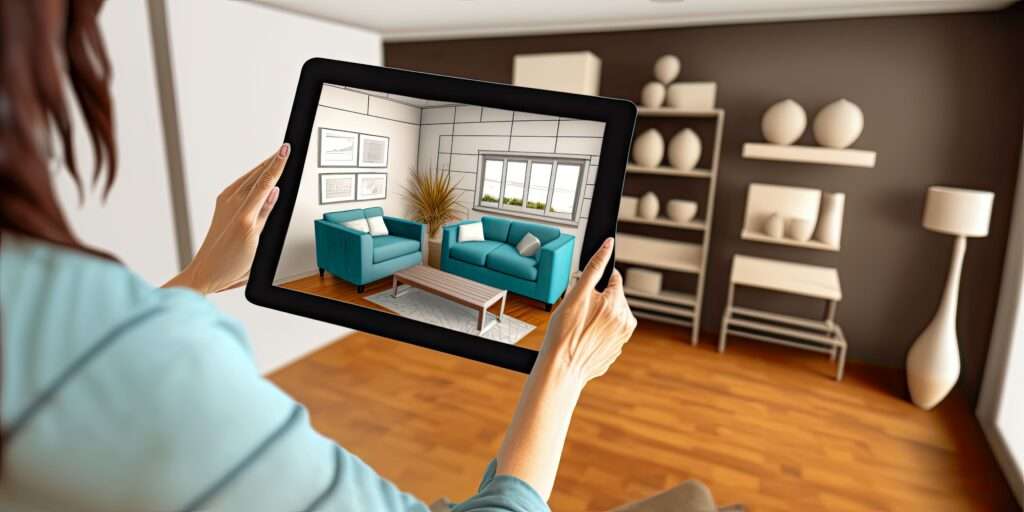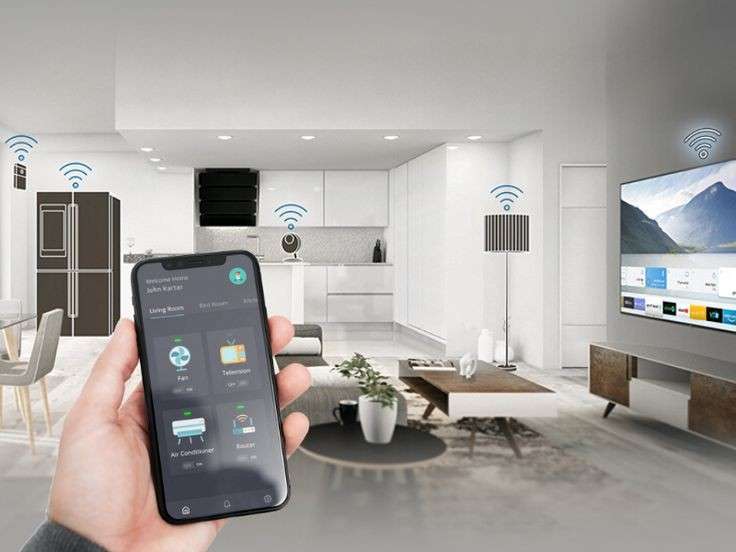Technology is transforming every industry, and interior design is no exception. As designers, we are always looking for innovative ways to enhance the design experience for our clients. One of the most groundbreaking advancements in recent years is the integration of Virtual Reality (VR) into interior design. At Scale & Structure, we are excited about how VR can revolutionize the way we create, visualize, and experience spaces.
In this blog, we’ll explore how VR is changing the landscape of interior design, and how it is being used to provide clients with a more immersive, interactive, and efficient design process.

What is Virtual Reality in Interior Design?
Virtual Reality in interior design is the use of 3D simulations to create digital representations of spaces, allowing designers and clients to explore and interact with a space before making any physical changes. It enables a fully immersive experience where users can “walk through” a room, make design adjustments, and even test out different layouts, finishes, and furniture pieces.
At Scale & Structure, we leverage VR technology to help our clients visualize their dream spaces in a more tangible way, making the design process more collaborative, intuitive, and fun.
Why Virtual Reality is a Game-Changer for Interior Design
1. Realistic Visualization and Immersive Experiences
One of the greatest benefits of VR in interior design is the ability to see and interact with a space in 3D before any construction or renovation begins. Traditionally, designers and clients rely on 2D floor plans or static 3D renderings, which can sometimes make it difficult to fully comprehend the scale, flow, and ambiance of a space. VR removes these limitations by offering an immersive experience where clients can walk through their future space in real-time.
With VR, the colors, textures, and spatial dimensions of a room come to life, allowing clients to get a true feel of the space as if they were physically there.
How VR Enhances Visualization:
- Accurate scale: VR allows for precise measurements and spatial awareness, helping clients better understand the scale of furniture and layouts.
- Immersive environment: The ability to walk through and interact with a space enhances decision-making, reducing uncertainties that arise from traditional design methods.
- Instant adjustments: Clients can make real-time changes to wall colors, furniture arrangements, or lighting to instantly see how those changes affect the overall feel of the room.
At Scale & Structure, we use VR technology to ensure that the design choices we make for our clients are exactly what they envisioned, and that the final space reflects their personality and needs.
2. Faster Design and Decision-Making
In traditional interior design, clients often struggle with visualizing how different elements will come together in a space. Color swatches, fabric samples, and layout options can be hard to imagine in the context of the actual room. VR technology eliminates much of this guesswork, enabling clients to make quicker decisions and reducing the back-and-forth revisions that can be common in traditional design projects.
How VR Improves the Design Process:
- Instant feedback: Clients can offer immediate feedback after experiencing their space in VR, speeding up the decision-making process.
- No surprises: By allowing clients to walk through a space before any work is done, VR ensures that they are confident in their design choices and eliminates the risk of unpleasant surprises.
- Cost and time savings: By identifying potential design issues early on in the process, VR can help reduce costly mistakes and delays during construction or renovation.
At Scale & Structure, we believe that faster, more confident decisions lead to a smoother, more efficient design process, ultimately delivering better results for our clients.
3. Enhanced Collaboration Between Designers and Clients
Collaboration is key in interior design, and VR provides an incredible platform for designers and clients to work together in real-time. Clients can actively participate in the design process by exploring various options, offering input, and making adjustments. This creates a more transparent and inclusive experience, where clients can feel empowered to bring their vision to life.
How VR Facilitates Collaboration:
- Interactive design sessions: Designers and clients can meet in virtual spaces, discuss design elements, and make instant changes based on mutual input.
- Remote collaboration: VR enables long-distance collaboration, allowing clients and designers to work together regardless of geographical location.
- Client engagement: By allowing clients to interact with the design process, VR makes them feel more connected to the project and invested in the final outcome.
At Scale & Structure, we use VR as a collaborative tool to ensure that every design decision aligns with the client’s vision, creating a truly customized space.
4. Sustainable Design Decisions
Virtual Reality can also support sustainable interior design practices by reducing waste. Traditionally, designers would need to order materials, create physical mock-ups, and construct sample areas of a space to determine the best options for finishes, colors, and furniture. With VR, all these aspects can be visualized in the virtual world, eliminating the need for unnecessary physical samples and reducing material waste.
How VR Promotes Sustainability:
- Material selection: Clients can explore and compare different materials virtually without wasting physical resources.
- Efficient use of space: VR allows designers to experiment with various layouts to make the most efficient use of available space, ensuring that nothing is wasted.
- Reduced construction waste: By finalizing the design digitally, there’s less risk of making costly, wasteful mistakes during construction or renovation.
At Scale & Structure, we prioritize sustainable practices, and VR helps us minimize waste while still delivering exceptional, tailored designs for our clients.
5. Customization and Personalization
One of the greatest advantages of VR in interior design is its ability to showcase personalized and customized design options in real-time. Clients can explore different layouts, furniture choices, finishes, and decor items, and see how these elements work together in the context of their space. This ensures that the final design reflects their unique preferences and lifestyle.
How VR Enhances Customization:
- Tailored design experiences: Clients can choose from a wide range of furniture, color palettes, and finishes to create a space that reflects their personality.
- Custom furniture visualization: VR allows clients to see how custom-built furniture will fit into their space, helping them make more informed decisions.
- Flexible design options: With VR, clients can try out several variations of a design without the need for physical prototypes, providing endless possibilities for customization.
At Scale & Structure, we understand that no two clients are alike. VR allows us to provide a highly personalized design experience, giving clients the freedom to experiment and find the perfect fit for their needs.



